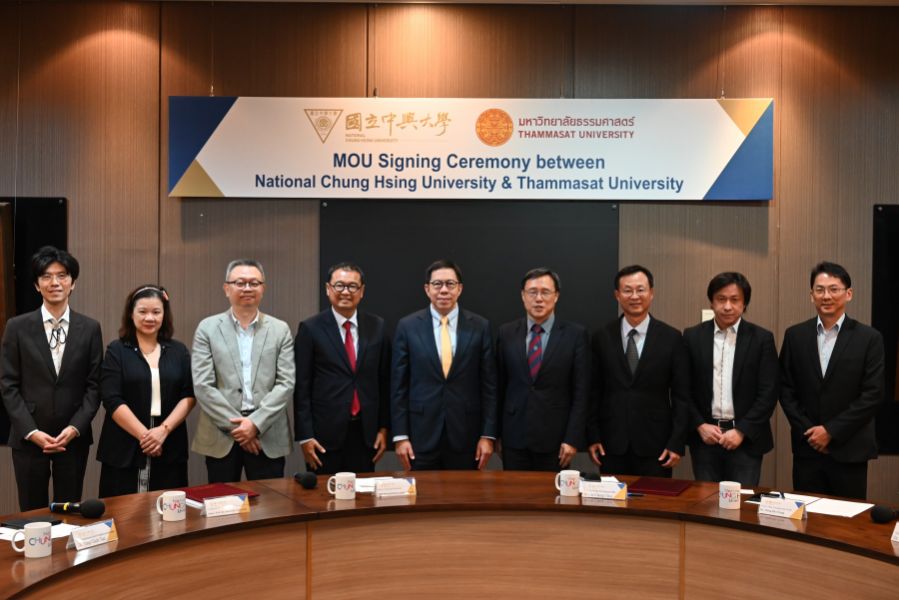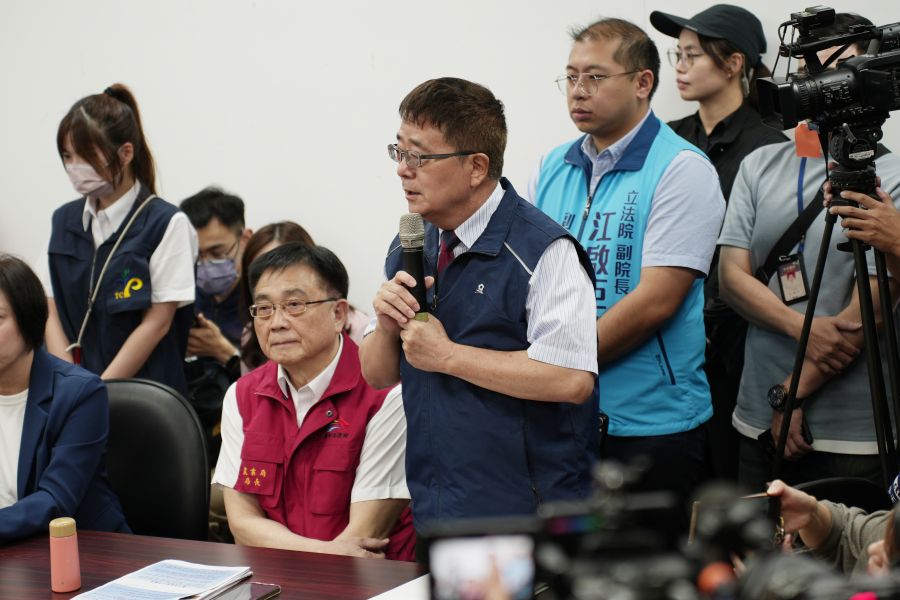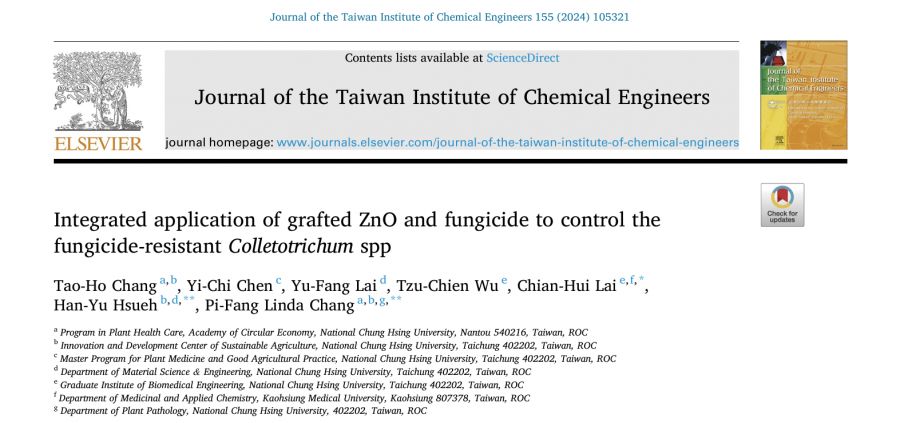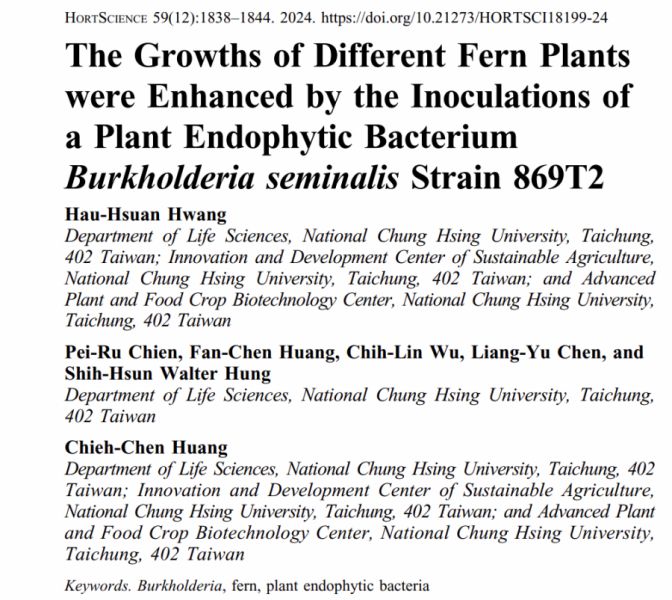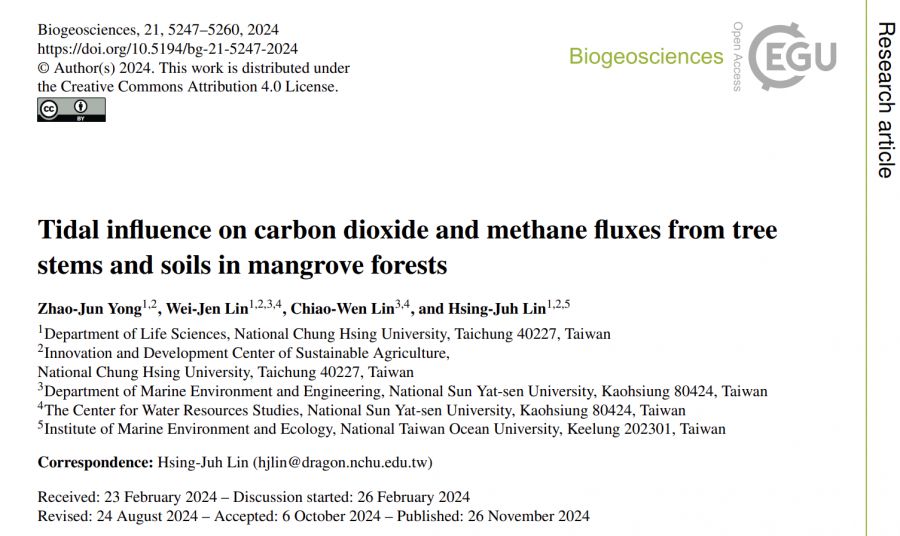| 論文篇名 | 英文:Cobalt-impregnated biochar produced from CO2-mediated pyrolysis of Co/lignin as an enhanced catalyst for activating peroxymonosulfate to degrade acetaminophen 中文:鈷浸漬的生物炭,由CO2介導的Co /木質素熱解產生,作為活化過氧單硫酸鹽降解對乙酰氨基酚的增強催化劑 |
| 期刊名稱 | Chemosphere |
| 發表年份,卷數,起迄頁數 | 2019/226/924~933 |
| 作者 | Ming-TongYang YunchenDu Wai-ChiTong Alex C.K.Yip Kun-Yi AndrewLin |
| DOI | 10.1016/j.chemosphere.2019.04.004 |
| 中文摘要 | -雖然基於硫酸根(SO4-)的工藝可用於降解對乙酰氨基酚(ACE),但使用過氧一硫酸鹽(PMS)降解ACE的研究非常有限。另外,儘管鈷被證實是激活PMS的最有效金屬,但很少有Co催化劑被開發出來並用於激活PMS以降解ACE。由於碳是支持Co納米顆粒(NP)形成Co /碳複合催化劑的有前途的基質,因此大多數現有的碳基質都需要精細的製造。由於生物炭是一種易於獲得但用途廣泛的碳材料,Co /木質素的熱解可提供一種有利的共浸生物炭(CoIB),作為PMS活化的有吸引力的催化劑。具體地,由於CO 2替代N 2作為熱解Co /木質素的反應介質,所以可以顯著改善熱解產生的合成氣並提供磁性CoIB。該CoIB由浸在生物炭碳基質中的均勻分佈的Co納米顆粒(NP)組成,並具有多種優異的特性,例如高孔隙率,大表面積和磁性,使CoIB成為活化PMS降解ACE的有希望的催化劑。 CoIB還顯示出比CoIBN2和Co3O4更高的PMS活化催化活性,以降解ACE。 CoIB也可回收用於激活PMS,以在多個週期內有效降解ACE。根據降解產物,提出了通過CoIB激活的PMS進行ACE降解的途徑。這些發現證實了CoIB無疑是一種有利的多相催化劑,可以輕鬆地將Co /木質素在CO2中進行熱解,並同時提高合成氣的產生,以有效激活PMS降解ACE。 |
| 英文摘要 | −While sulfate radical (SO4 −)-based processes are useful to degrade acetaminophen (ACE), studies of using peroxymonosulfate (PMS) to degrade ACE are quite limited. In addition, although Co is validated as the most effective metal for activating PMS, very few Co catalysts have been developed and investigated for activating PMS to degrade ACE. Since carbon is a promising substrate to support Co nanoparticles (NPs) to form Co/carbon composite catalysts, most existing carbon substrates require delicate fabrications. As biochar is an easy-to-obtain but versatile carbon material, pyrolysis of Co/lignin affords an advantageous Co-impregnated biochar (CoIB) as an attractive catalyst for PMS activation. Specifically, as CO2 substitutes N2 as a reaction medium for pyrolysis of Co/lignin, the syngas production from pyrolysis can be substantially improved and a magnetic CoIB is afforded. This CoIB consists of evenly-distributed Co nanoparticles (NPs) impregnated in carbon matrices of biochar, and possesses several superior characteristics, such as high porosity, large surface area and magnetism, enabling CoIB a promising catalyst for activating PMS to degrade ACE. CoIB also shows a much higher catalytic activity of PMS activation than CoIB N2, and Co3O4 for degrading ACE. CoIB is also recyclable for activating PMS to effectively degrade ACE for multiple cycles. The ACE degradation pathway by this CoIB-activated PMS is proposed according to the degradation products. These findings validate that CoIB is assuredly an advantageous heterogeneous catalyst, which can be easily prepared from pyrolysis of Co/lignin in CO2 with concomitant enhanced syngas production for effectively activating PMS to degrade ACE. |
Cobalt-impregnated biochar produced from CO2-mediated pyrolysis of Co/lignin as an enhanced catalyst for activating peroxymonosulfate to degrade acetaminophen 2019-04-04
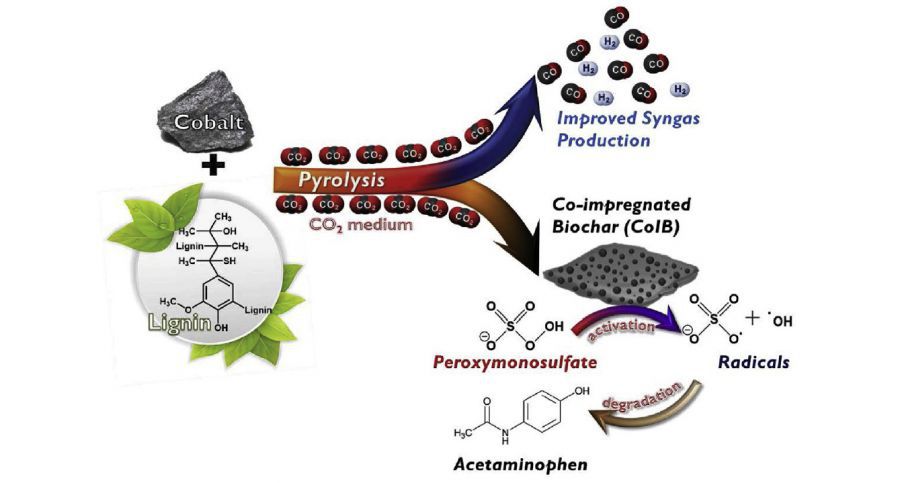
循環農業:農業廢棄物高價值化【環工系林坤儀教授】

